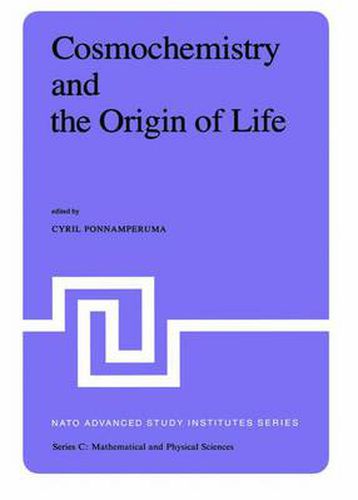Readings Newsletter
Become a Readings Member to make your shopping experience even easier.
Sign in or sign up for free!
You’re not far away from qualifying for FREE standard shipping within Australia
You’ve qualified for FREE standard shipping within Australia
The cart is loading…






This title is printed to order. This book may have been self-published. If so, we cannot guarantee the quality of the content. In the main most books will have gone through the editing process however some may not. We therefore suggest that you be aware of this before ordering this book. If in doubt check either the author or publisher’s details as we are unable to accept any returns unless they are faulty. Please contact us if you have any questions.
For the first time in human history, developments in many branches of science provide us with an opportunity of formula ting a comprehensive picture of the universe from its beginning to the present time. It is an awesome reflection that the carbon in our bodies is the very carbon which was generated during the birth of a star. There is a perceptible continuum through the billions of years which can be revealed by the study of chemistry. Studies in nucleosynthesis have related the origin of the elements to the life history of the stars. The chemical elements we find on earth, HYdrogen, Carbon, Oxygen, and Nitrogen, were created in astronomical processes that took place in the past, and these elements are not spread throughout space in the form of stars and galaxies. Radioastronomers have discovered a vast array of organic molecules in the interstellar medium which have a bearing on prebiological chemical processes. Many of the molecules found so far contain the four elements, C, N, 0, H. Except for the chem ically unreactive He, these four elements are the most abundant in the galaxy. The origin of polyatomic interstellar molecules is an unresolved problem. While we can explain the formation of some diatomic molecules as due to two atom collisions, it is much more difficult to form polyatomic molecules by collisions between diatomic molecules and atoms. There may be other produc tion mechanisms at work such as reactions taking place on the surface of interstellar dust grains.
$9.00 standard shipping within Australia
FREE standard shipping within Australia for orders over $100.00
Express & International shipping calculated at checkout
This title is printed to order. This book may have been self-published. If so, we cannot guarantee the quality of the content. In the main most books will have gone through the editing process however some may not. We therefore suggest that you be aware of this before ordering this book. If in doubt check either the author or publisher’s details as we are unable to accept any returns unless they are faulty. Please contact us if you have any questions.
For the first time in human history, developments in many branches of science provide us with an opportunity of formula ting a comprehensive picture of the universe from its beginning to the present time. It is an awesome reflection that the carbon in our bodies is the very carbon which was generated during the birth of a star. There is a perceptible continuum through the billions of years which can be revealed by the study of chemistry. Studies in nucleosynthesis have related the origin of the elements to the life history of the stars. The chemical elements we find on earth, HYdrogen, Carbon, Oxygen, and Nitrogen, were created in astronomical processes that took place in the past, and these elements are not spread throughout space in the form of stars and galaxies. Radioastronomers have discovered a vast array of organic molecules in the interstellar medium which have a bearing on prebiological chemical processes. Many of the molecules found so far contain the four elements, C, N, 0, H. Except for the chem ically unreactive He, these four elements are the most abundant in the galaxy. The origin of polyatomic interstellar molecules is an unresolved problem. While we can explain the formation of some diatomic molecules as due to two atom collisions, it is much more difficult to form polyatomic molecules by collisions between diatomic molecules and atoms. There may be other produc tion mechanisms at work such as reactions taking place on the surface of interstellar dust grains.